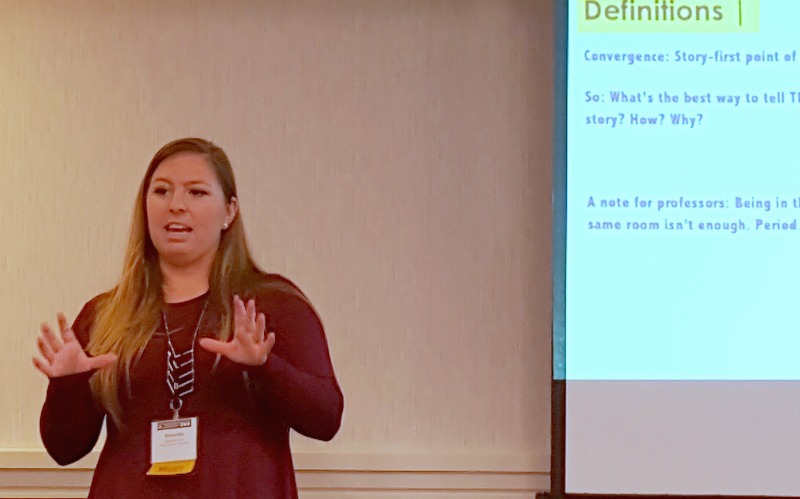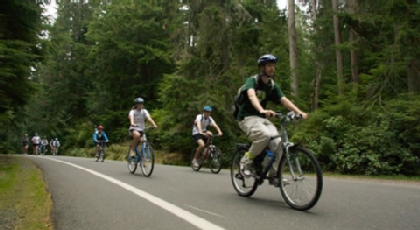Page 190 • (3,656 results in 0.068 seconds)
-

June 3, 2014 MESA at PLU Celebrates 30 Years of Success Students gather at PLU for the 2014 MESA Day engineering competition. (Photo: John Froschauer/PLU) June 17 Luncheon Celebrates Achievements and Looks Toward the Future By Sandy Deneau Dunham PLU Marketing & Communications When the MESA program was established at Pacific Lutheran University in 1984, it served about 20 students. Today, 30 years later, the program has worked with more than 14,000 students, said JR Nobles, director of Tacoma
-

throughout the university, that core priorities are being upheld, and that progress is being measured and accounted for, so the school can adapt, respond, improve and thrive. “The work itself involves the intentional integration of strategic leadership, assessment, institutional research and accreditation,” McConnell says. “Ultimately the goal is to support people and processes and help move the university forward with intentionality and integrity to our mission.” McConnell joined the PLU faculty as a
-
hundreds. So how did this mature 19-year-old man, who grew up in places best described as “you can’t get there from here,” end up at Pacific Lutheran University, let alone playing for the resurgent Lutes men’s basketball program? The story starts with his father, Stephen ’83, a PLU graduate and one of eight children of Dr. Richard Klein, a PLU regent from 1973-87, and Joanne (Bjork ’63) Klein. Stephen took his first teaching job at the high school in Gambell, Alaska, a village of 300 inhabitants on the
-

students from across the country together to learn, mingle and share ideas. This year, I was lucky enough to be a speaker for the national convention alongside professionals, professors and select students. The conference, which ran from March 12-15 in Times Square, drew about 2,500 people from schools nationwide. Attendees came to hear the research and scholarship presentations of 250 speakers. In Fall 2015, I submitted a proposal to speak about convergence, the merging of media and technologies to
-

demonstrate the most potential for affecting positive change and leadership in academic and co-curricular life on campus. It began with Director of Military Outreach Michael Farnum, an Army veteran who set up the endowment to honor the wishes of his late father-in-law, Sgt. 1st Class Eugene C. Price. Dean is a member of the Snohomish tribe, which is a small tribe associated with the Tulalip Tribes of Washington, a Native American community in the mid-Puget Sound area. She is the first recipient of the
-

,” she said. OTR trips are a part of new student orientation where students register for an off-campus visit somewhere in the Puget Sound region with a group of other new students and orientation guides. The trips are tailored to different areas of interest and are divided into four categories: service, art and culture, outdoor recreation and just-for-fun. Melanie Deane, student coordinator for OTR, said that choosing places to go is based on what has been popular with students in the past. “I think
-

Sonnenberg ’14, counting 30,000 seeds so minuscule that 5,000 can fit on a thumbnail. It took days. Dahms asked himself, “What did I get myself into?” As a biology major who has an interest in molecular biology and hopes to go to medical school, he never thought he’d be studying plants as part of a student-faculty research project. “I really didn’t care for plants all that much,” he said. “But I came in with an open mind of what I can do and what I can learn, and really had one of the best summers of my
-

across campus. Leaders at Pacific Lutheran University agree.The institution recently invested more than $630,000 to improve accessibility for students such as Green, who was diagnosed with spinal muscular atrophy when she was 3 years old. Growing up, doctors told her she may never move out of her parents’ house. Now, she’s a senior living in South Hall at PLU and considering law school. “I didn’t let that define me,” she said of the prognosis. Still, her journey hasn’t always been easy. Green, who
-
Sustainability in Monastic Communities Posted by: alex.reed / May 22, 2022 May 22, 2022 By Joy Edwards, ‘21 (Religion and English Major)Originally published in 2021Dr. Samuel Torvend spent his sabbatical during the 2019-20 school year researching environmental consciousness and sustainability in early medieval monastic communities. Early medieval monasteries were built to last, he emphasizes. “When these monastic communities were established, they did not think they were going to be there for a
-

up, Watts was bullied by people who labeled her an “outsider” from an early age. Where some might have been crushed or silenced by that designation, however, she’s grown from it and learned to become a self-advocate.“Sometimes I still feel like an outsider in my own community,” she said. “I was very aware that I was different — I see in an array of rainbows, and other people see black and white.” Watts said if it wasn’t for her aunt, who urged her mother to get Watts diagnosed, this might have
Do you have any feedback for us? If so, feel free to use our Feedback Form.


